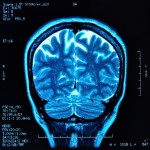 The Multiple Faces of Multiple Sclerosis
The Multiple Faces of Multiple Sclerosis
It seems to me that the prevalence of auto-immune diseases is on the rise these days. Thyroid deficiency (Hashimoto’s disease), intestinal assaults (Crohn’s and Celiac’s diseases), and system-wide troubles, such as rheumatoid arthritis and type 1 diabetes are rearing their ugly heads with increasing frequency amongst my friends, family members and patients. When the body decides that a part of itself is “foreign”, a war is waged in which the attacker becomes the attacked.
One such troubling auto-immune disease affecting the nervous system is multiple sclerosis (MS). In this condition, the body has deemed the insulating, waxy coating along its nerve cells to be public enemy #1. As one’s own immune system begins to “eat up” this insulation, brain generated messages never get to their intended destination. The electrical dispatch sent simply veers off the nerve as if it had ADD!
The result of this “signal transmission problem” can be a change in, decreased strength of random skeletal muscles, or eventually an alteration or disruption in motility, which necessitates the use of assistive devices.
Because of its random, somewhat vague, initial symptoms, this disease can elude diagnosis for years! So here is a list of some early signs for you to be aware of:
- Blurred or double vision (typically one eye)
- Thinking / focus problems
- Clumsiness / lack of coordination
- Loss of balance
- Numbness
- Tingling
- Weakness in an arm or leg
- Extreme fatigue, exacerbated by heat
Once multiple sclerosis is suspected and an MRI of the brain is ordered, telltale “plaques” visualized within the brain and/or spinal cord yield a swift diagnosis.
Each person with MS will walk a different road. Some will find their symptoms coming and going, others will be left with some minor to moderate deficits along the way, and a small percent of others will decline steadily, eventually requiring assistance with most tasks.
Advances in medicine have the newly diagnosed patient benefiting from early medicinal intervention which is designed to fight back against the attack of one’s own immune system. Physical therapy is quite helpful when dealing with muscle pain, stiffness, and the need for training in the use of assistive devices. Early stage research is underway with the hope of someday using auto-stem cells to replace the damaged areas in the brain and spinal cord.